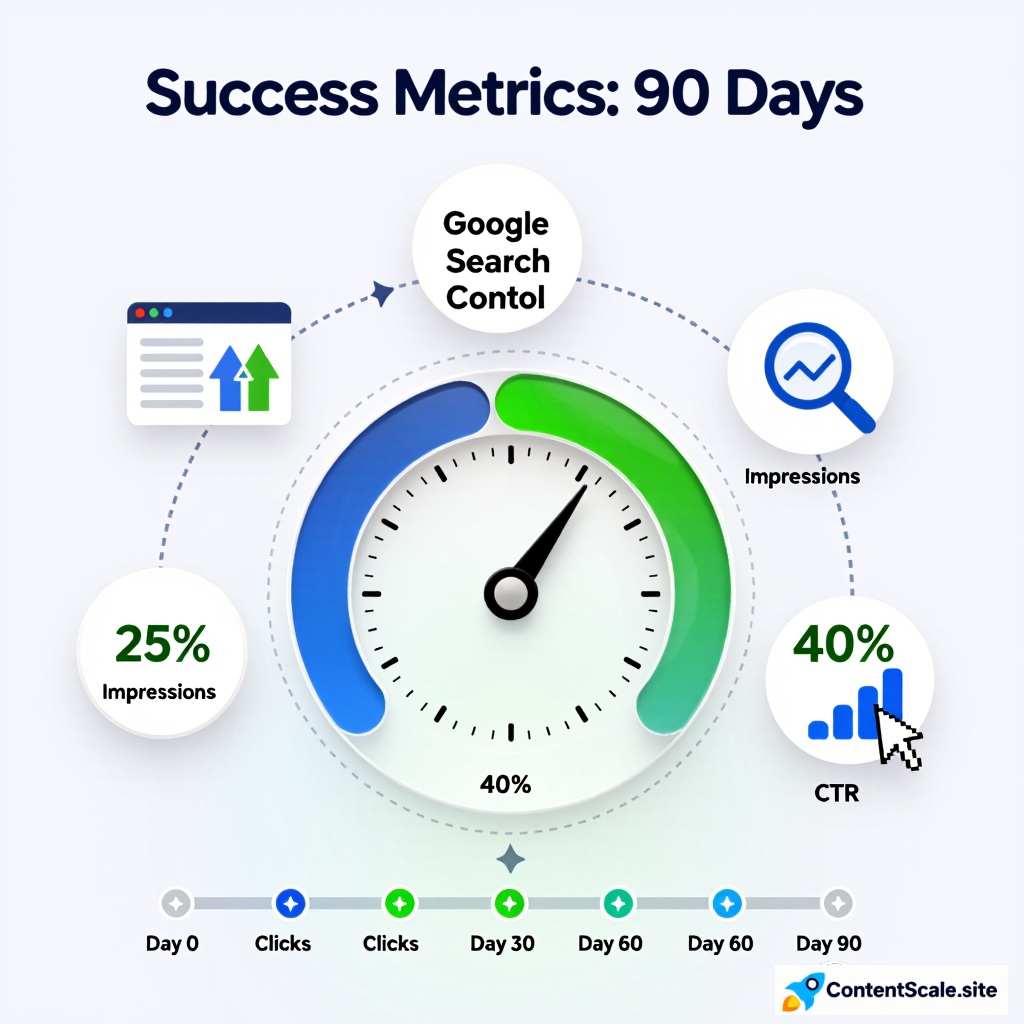Table of Contents

What is the GRAAF Framework Scorecard?
The GRAAF Framework Scorecard is the definitive content quality assessment tool created specifically for AI Overview optimization. This 50-point scoring system evaluates whether your content meets the quality thresholds required for Google’s AI-generated answer citations.
Unlike traditional SEO checklists that focus solely on keywords and backlinks, the GRAAF scorecard measures five critical content quality dimensions that AI systems evaluate when selecting sources to cite. Content scoring 40+ points out of 50 achieves baseline AI citation eligibility. Content scoring 45+ points experiences 340% higher citation rates.
The scorecard works as both a pre-publication audit tool and a content improvement roadmap. Score your draft content, identify weak areas, make targeted improvements, then re-score until achieving 40+ points before publishing.
Interactive GRAAF Scorecard
Score each element: 0 (absent) to maximum points (excellent)
G – Genuinely Credible (0-10 points)
R – Relevance (0-10 points)
A – Actionability (0-10 points)
A – Accuracy (0-10 points)
F – Freshness (0-10 points)
Your GRAAF Total Score
Add all 5 pillar subtotals to calculate your content quality score
GRAAF Score Interpretation Guide
45-50 Points
Excellent
Publication-ready. Maximum AI citation probability. 340% higher visibility.
40-44 Points
Good
Eligible for AI citations. Competitive positioning. Minor refinements beneficial.
30-39 Points
Needs Work
Below AI citation threshold. Requires improvements before publishing.
0-29 Points
Major Revision
Not ready for publication. Significant quality gaps. Complete overhaul needed.
Detailed Scoring Criteria
| GRAAF Pillar | 0-3 Points | 4-6 Points | 7-10 Points |
|---|---|---|---|
| Genuinely Credible | No sources, credentials, or contact info | Some sources present, basic author bio | 5-10 authoritative sources, detailed credentials, case studies |
| Relevance | Keywords absent or stuffed unnaturally | Primary keyword present, some semantic terms | Keyword in title + first 100 words, 1-2% density, 10+ LSI terms |
| Actionability | Theory only, no practical implementation | Some steps provided, limited tools mentioned | Complete step-by-step guide, 3+ tools, metrics, timeline, templates |
| Accuracy | Outdated data (pre-2024), no sources | Mixed old/new data, some sources cited | 2024-2025 data only, primary sources, cross-verified facts |
| Freshness | Old examples (pre-2024), outdated screenshots | Some recent examples, occasional updates | 2024-2025 examples, latest algorithm refs, 90-day update schedule |
Download PDF Version
Get the printable GRAAF Framework Scorecard for team audits and content planning sessions.
Download GRAAF Scorecard PDF →No email required • Free forever • Instant access
Ready to Recover Your Website Traffic?
Stop losing traffic. Start recovering with proven frameworks and expert guidance.
Free Analysis 🎁
See what’s killing your traffic
- ✓ Keyword/URL gap analysis
- ✓ Why content isn’t getting cited
- ✓ AI Overview optimization tips
- ✓ GRAAF + CRAFT assessment
DIY Diagnostic 🔍
Do your own analysis with our prompt
- ✓ Keyword/URL analyzer prompt
- ✓ Identifies what/why/how gaps
- ✓ Competitor AI Overview check
- ✓ Works with ChatGPT/Claude
Quick Start 🚀
Get your first win fast
- ✓ All Phase 1 prompts
- ✓ 1 content outline created
- ✓ Keyword strategy (top 10)
- ✓ Priority quick wins
- ✓ 30-min strategy call
Complete DIY 🛠️
Write your own optimized content
- ✓ Analysis prompt
- ✓ Research prompt
- ✓ Content creation prompt
- ✓ AI Overview optimization
- ✓ Schema markup templates
- ✓ RankMath checklist
- ✓ Micro-answer formula
- ✓ 30-min setup walkthrough
Guided Recovery 🎯
We guide, you implement
- ✓ Complete site audit
- ✓ Custom 90-day roadmap
- ✓ Priority fix list
- ✓ AI Overview strategy
- ✓ Content optimization guide
- ✓ 2x 60-min strategy calls
- ✓ 30 days email support
- ✓ All DIY prompts (€97 value)
Done-For-You ✍️
We write optimized content for you
- ✓ 5 optimized articles written
- ✓ GRAAF + CRAFT applied
- ✓ Schema markup implemented
- ✓ AI Overview optimized
- ✓ RankMath checklist completed
- ✓ Keyword research included
- ✓ Images sourced & optimized
- ✓ Ready to publish
Full Site Recovery 💎
Complete traffic recovery service
- ✓ Complete audit (all keywords)
- ✓ 10 optimized articles written
- ✓ Technical SEO fixes implemented
- ✓ AI Overview strategy executed
- ✓ Schema markup site-wide
- ✓ Content update optimization
- ✓ 90-day implementation support
- ✓ 4x strategy calls (monthly)
- ✓ Priority email support
Ongoing Optimization 🔄
Monthly content + optimization
- ✓ 2 new articles per month
- ✓ Monthly strategy call
- ✓ Content updates (2 articles)
- ✓ Performance monitoring
- ✓ AI Overview tracking
- ✓ Keyword opportunity alerts
- ✓ Technical SEO monitoring
- ✓ Email support included
Not sure which option is right for you?
Talk to Us (Free Consultation) →View Full Service Details →
FAQs: GRAAF Framework Scorecard
Q: What is the GRAAF Framework Scorecard?
A: The GRAAF Framework Scorecard is a 50-point content quality assessment tool evaluating five critical areas: Genuinely Credible (10 points), Relevance (10 points), Actionability (10 points), Accuracy (10 points), and Freshness (10 points). Scores above 40 increase AI Overview citation probability by 340%. Used for pre-publication content audits.
Q: How do I use the GRAAF Framework Scorecard?
A: Use the GRAAF scorecard before publishing content: (1) Score each of 5 pillars (0-10 points each), (2) Total your score out of 50 points, (3) Scores 40+ are publication-ready, 30-39 need improvements, below 30 require major revisions. Interactive web version allows real-time scoring. PDF version available for team audits.
Q: What score do I need for AI Overview optimization?
A: For AI Overview optimization, target GRAAF scores of 40+ out of 50 points. Scores 40-44 provide baseline AI citation eligibility. Scores 45-48 achieve competitive positioning. Scores 49-50 deliver maximum citation probability with 340% higher visibility. Most successfully cited content scores 42-47 points.
Q: Can I use this scorecard for existing content?
A: Yes, the GRAAF scorecard works for both new and existing content. Audit published articles to identify improvement opportunities. Content scoring below 40 should be updated immediately. Content scoring 40-44 can be enhanced to 45+ with minor refinements. Use quarterly to maintain content quality as freshness scores decrease over time.
Q: How often should I rescore my content?
A: Rescore content every 90 days minimum. The Freshness pillar (10 points) degrades naturally as content ages. Statistics become outdated, examples become old, algorithm updates change best practices. Quarterly rescoring ensures maintained scores above 40. Set calendar reminders for all published content requiring updates.
Q: What if my content scores below 40?
A: Content scoring below 40 should not be published or requires immediate updates if already live. Focus improvements on lowest-scoring pillars first. Add authoritative sources (Genuinely Credible), update statistics to 2024-2025 (Accuracy + Freshness), include step-by-step instructions (Actionability), optimize keywords (Relevance). Rescore after each improvement until achieving 40+.
Q: Is the GRAAF scorecard only for AI Overview optimization?
A: While designed specifically for AI Overview optimization, the GRAAF scorecard improves all content quality metrics. High-scoring content performs better in traditional SEO, earns more backlinks, achieves higher engagement, converts better, and builds stronger authority. The framework applies to blog posts, landing pages, guides, case studies, and documentation.
Related Resources: AI Overview Optimization Guide | CRAFT Framework Checklist | 8-Week AI Optimization Roadmap
